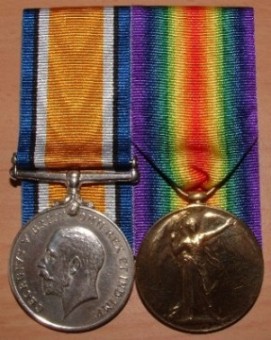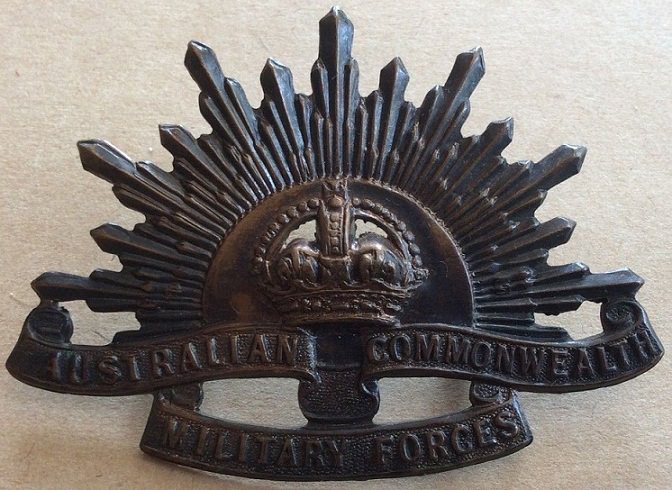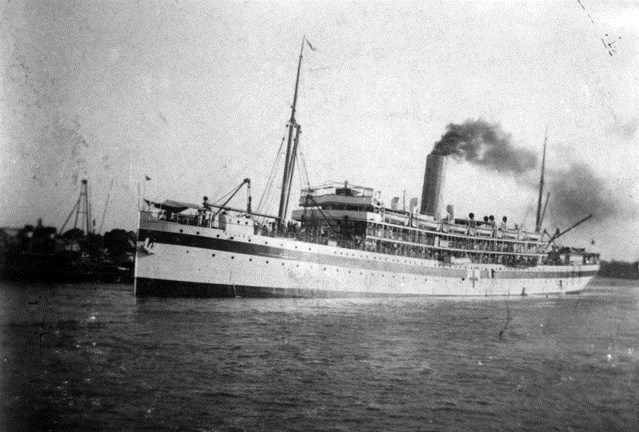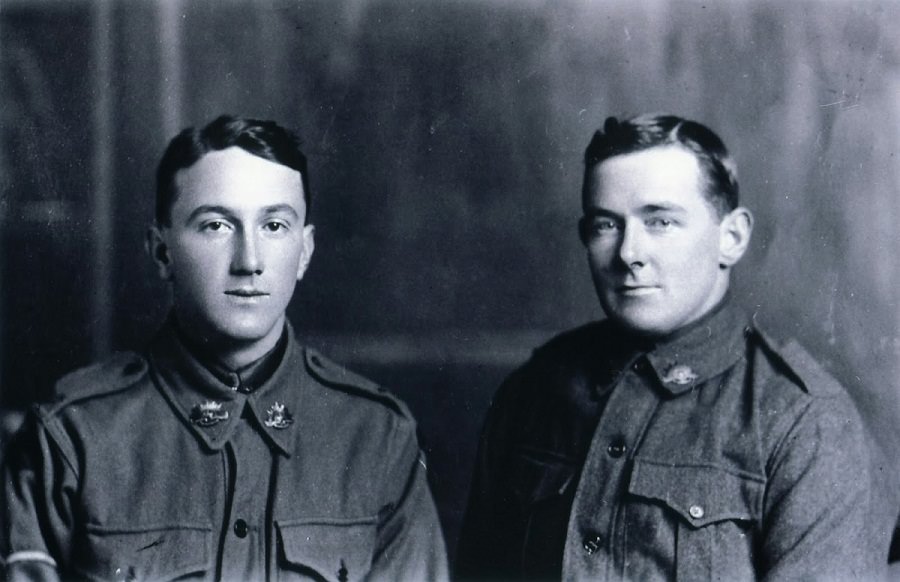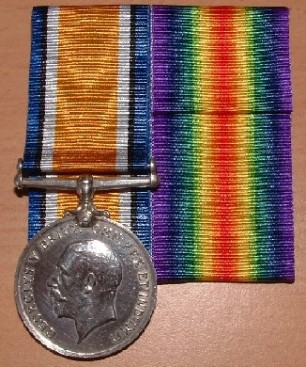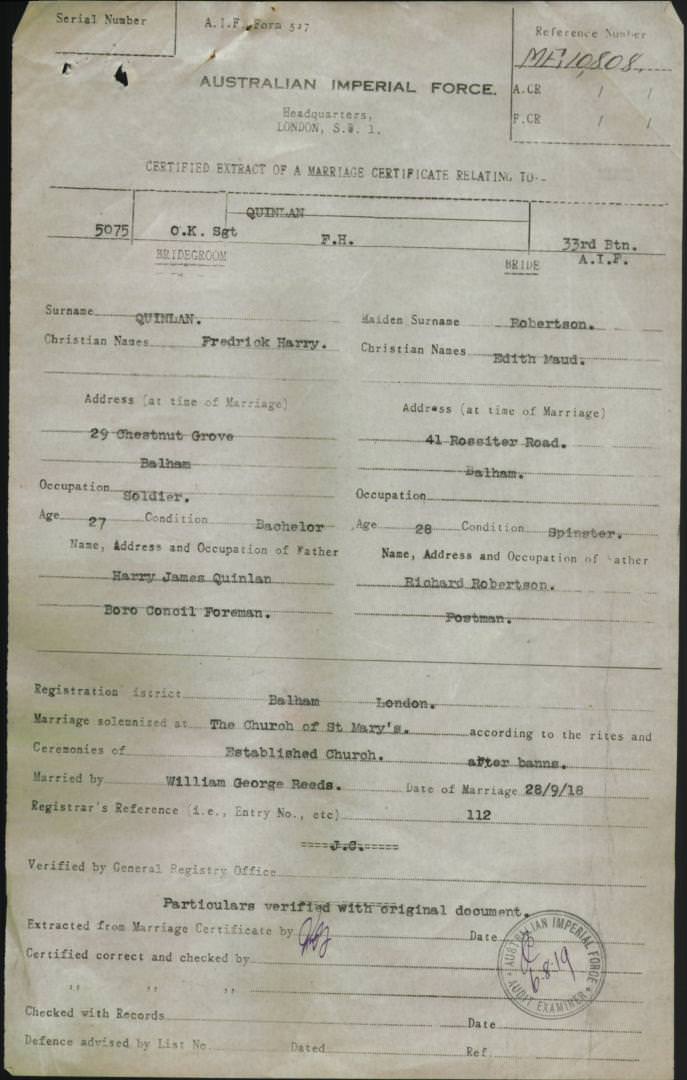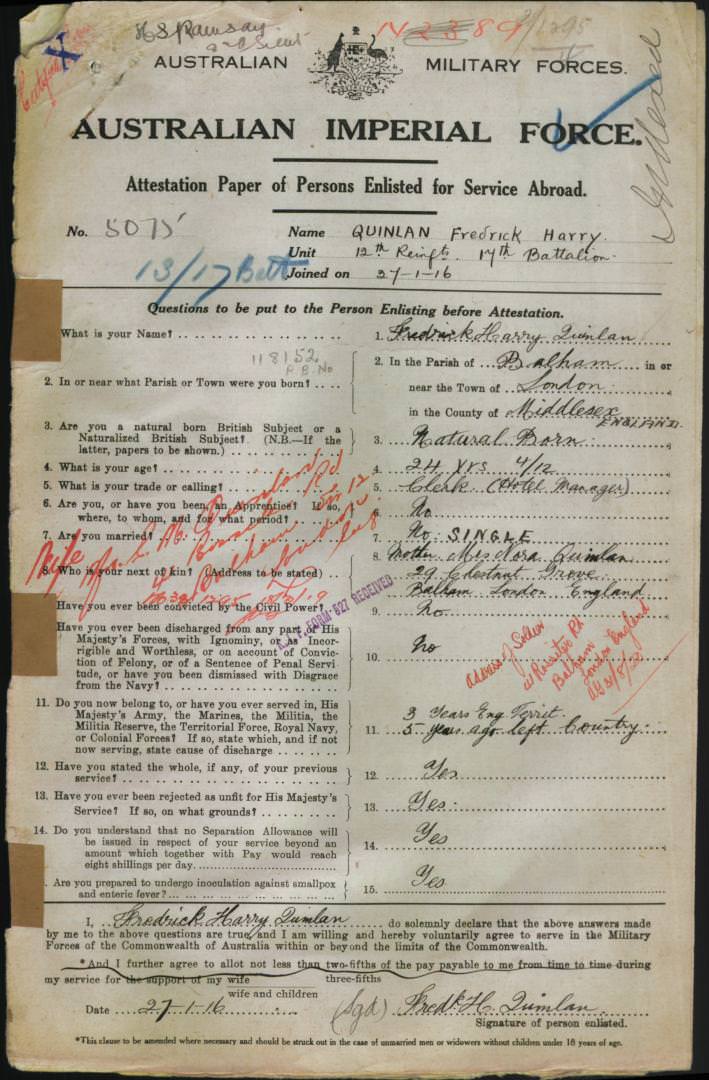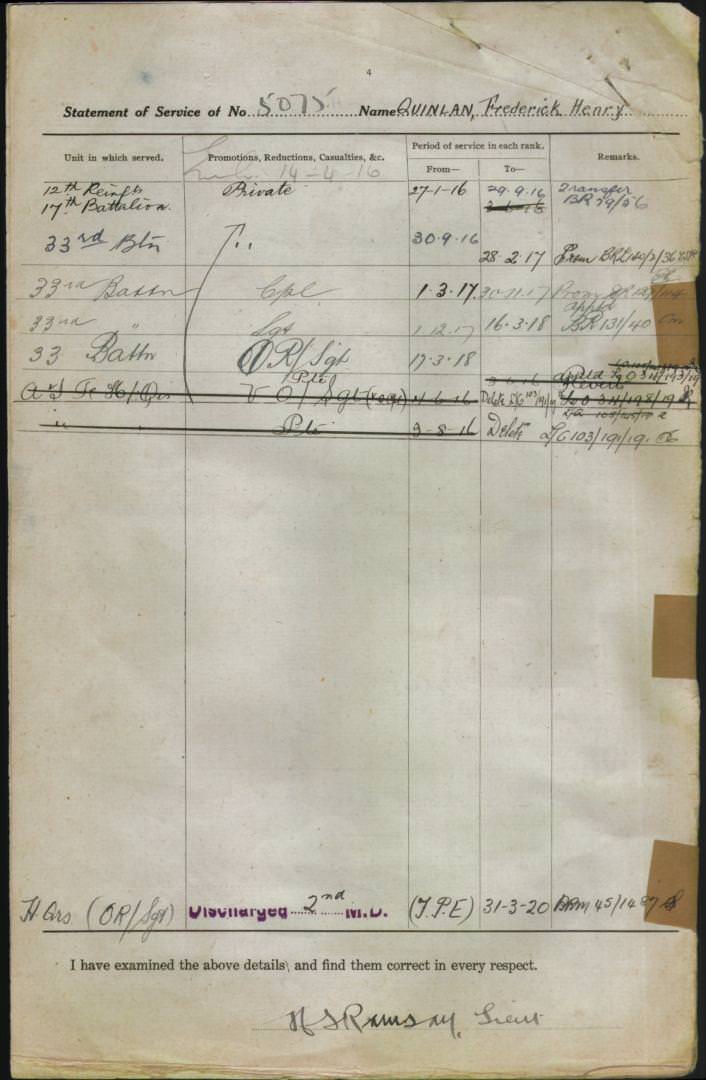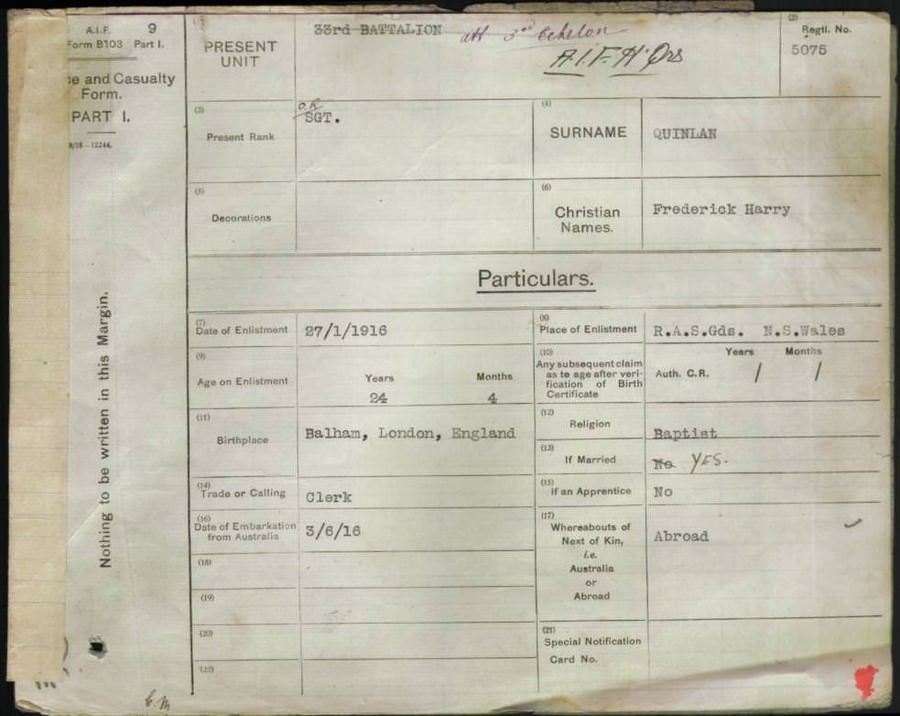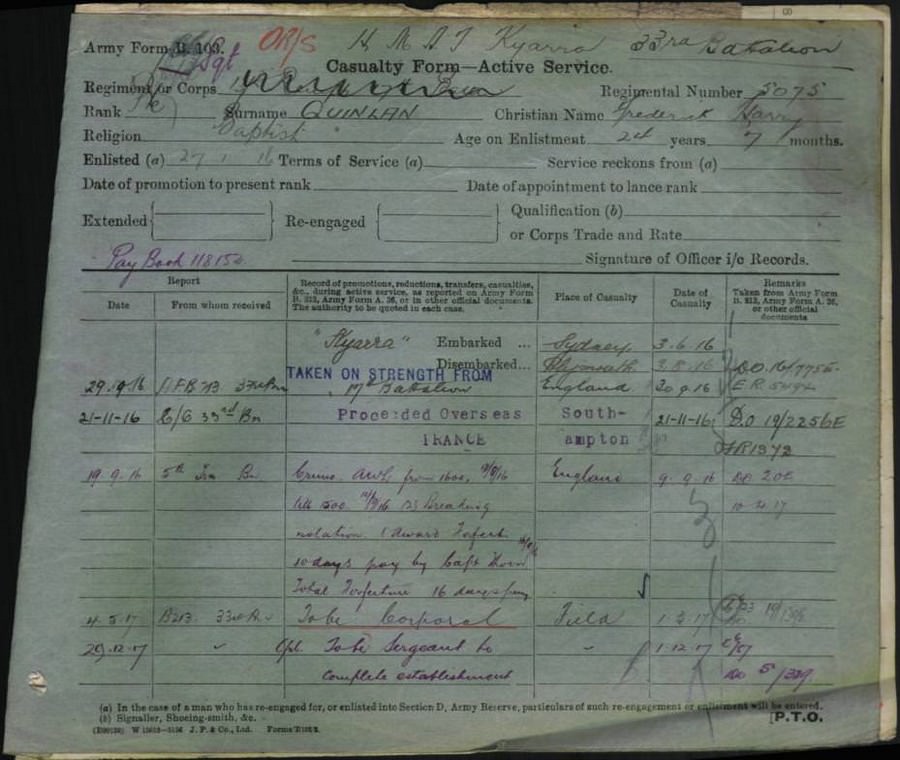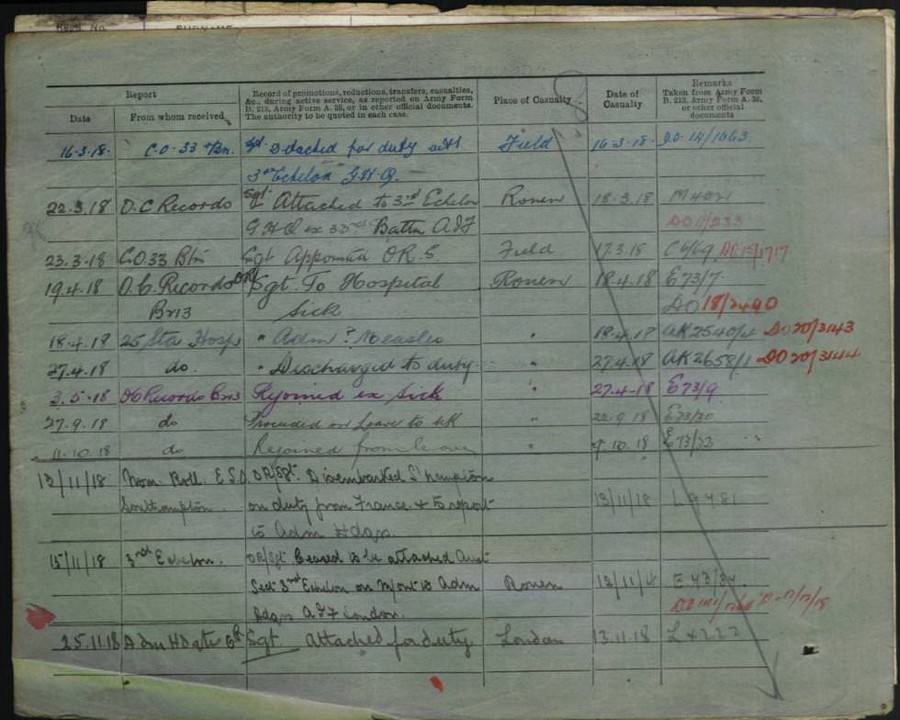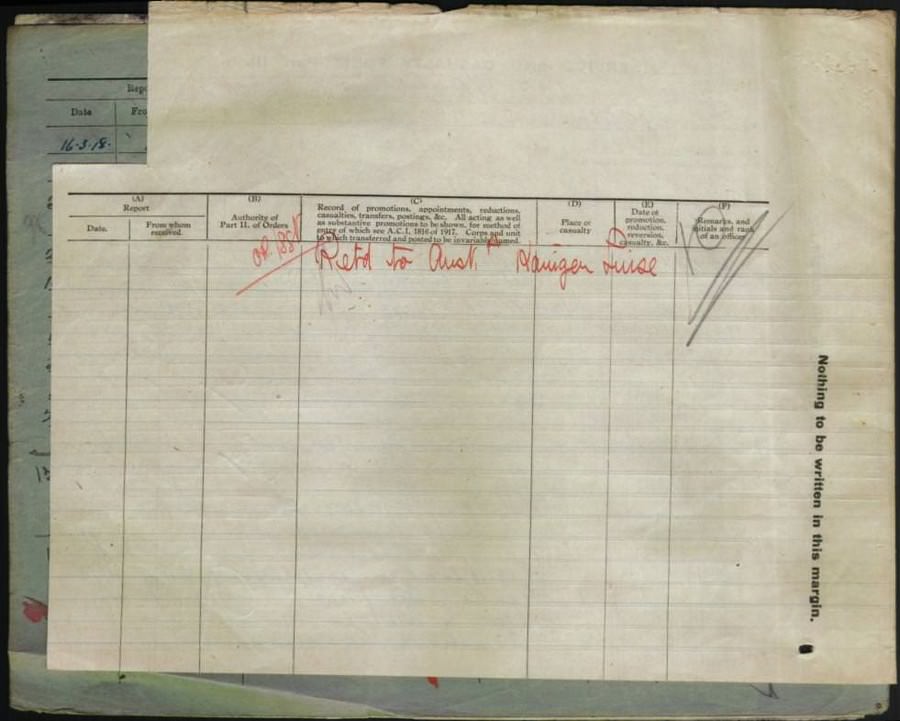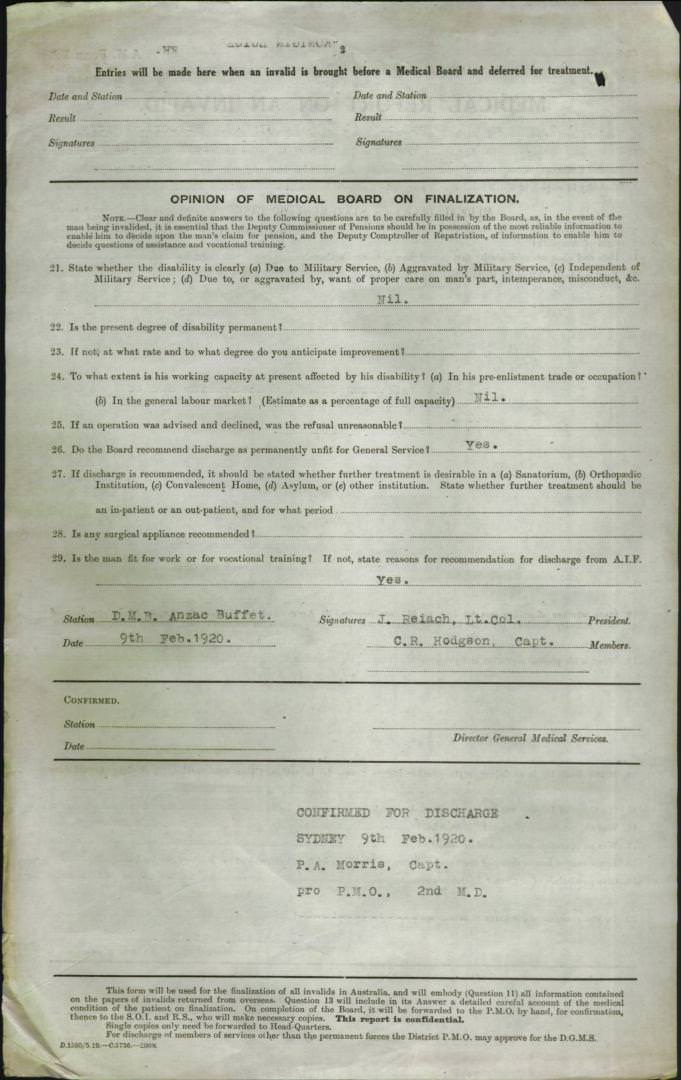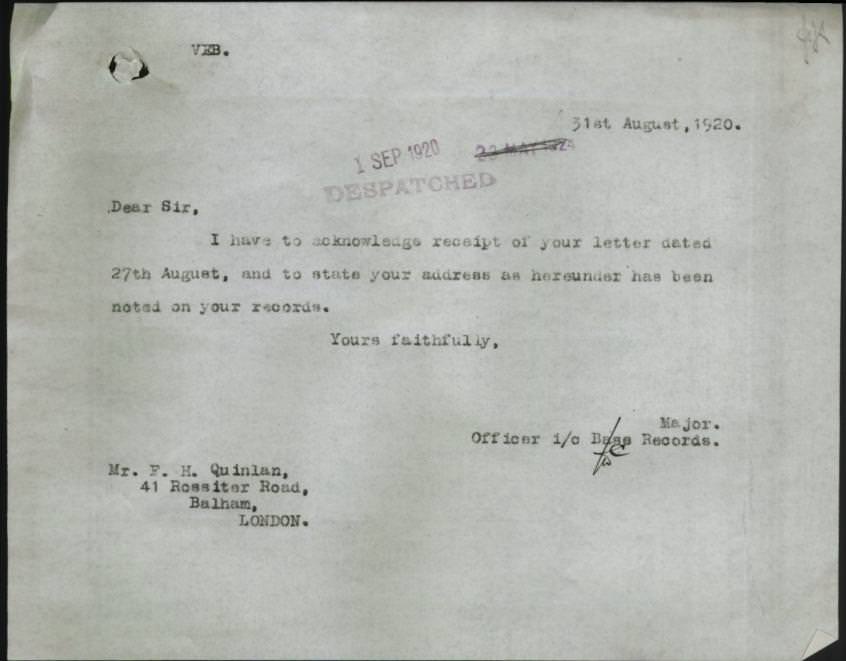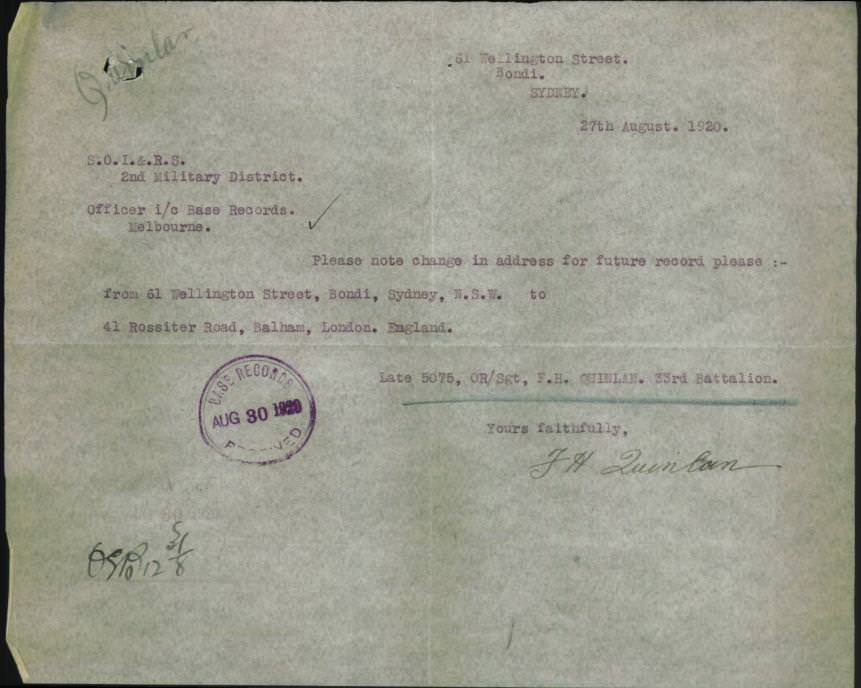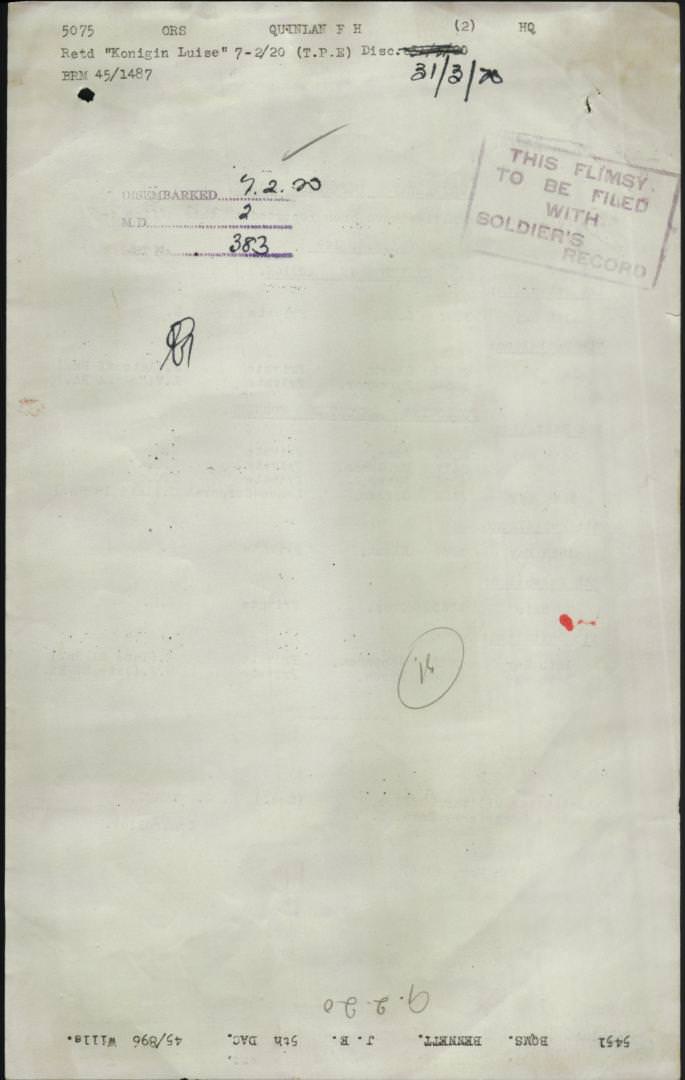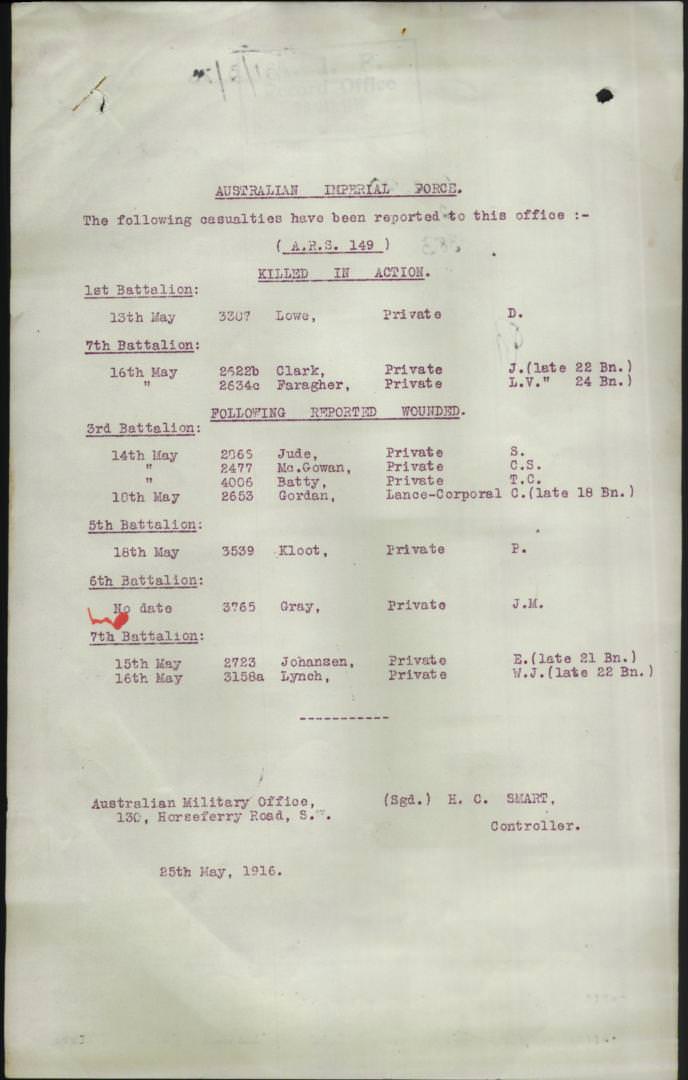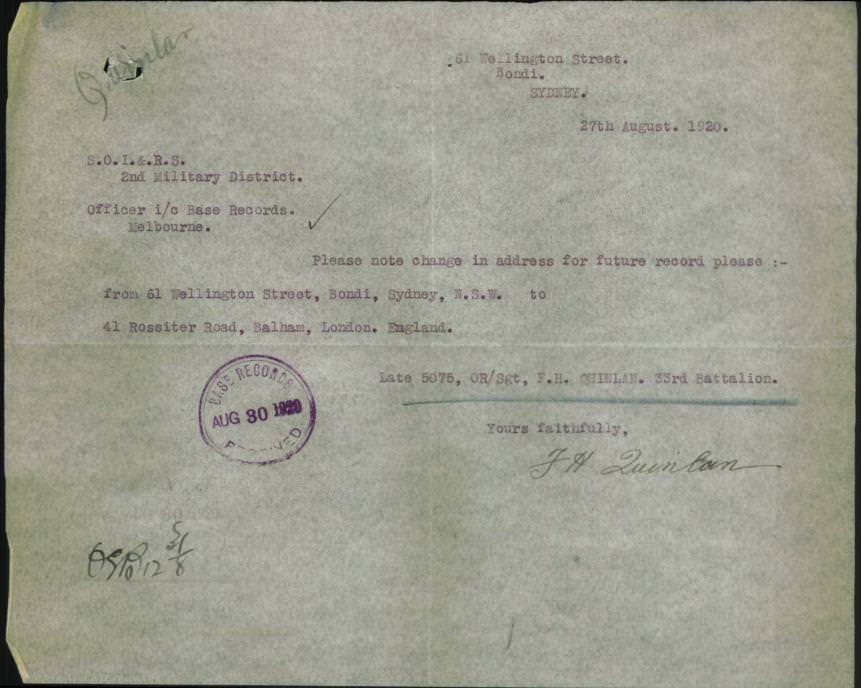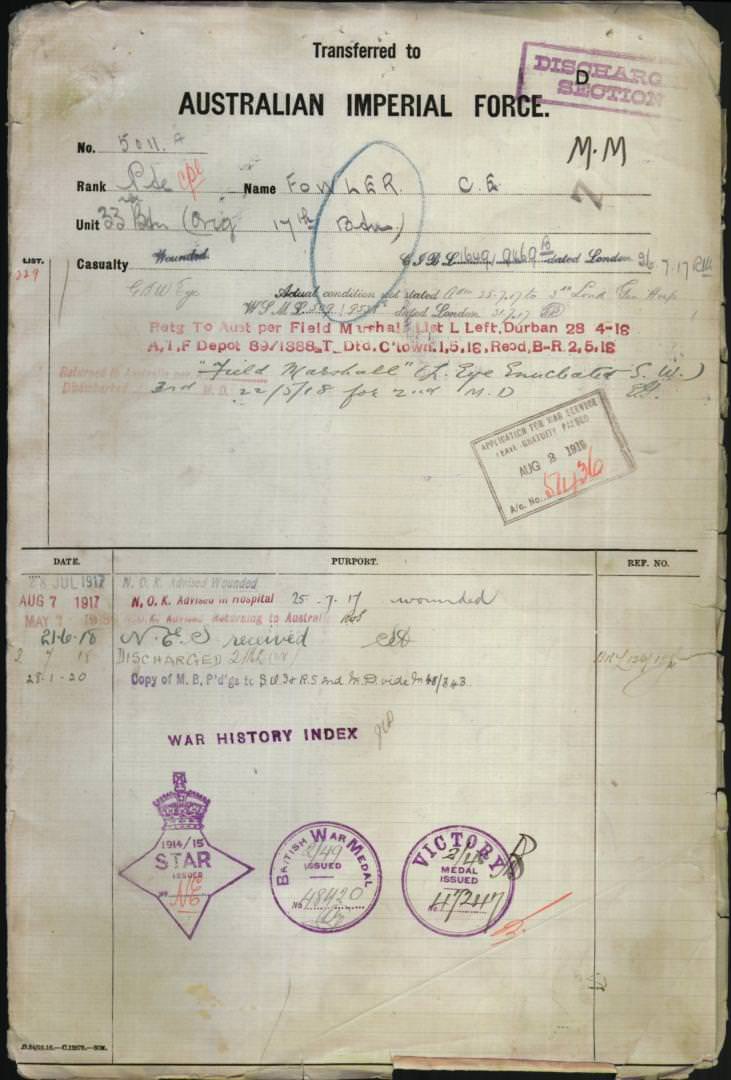17th BATTALION - 35th BATTALION A.I.F.
Private: 6562 James GORDON.
Born: 1894. Stockton on Tees, England.
Died: 21st February 1928. Prince of Wales Hospital, Randwick, New South Wales, Australia. Death Cert:1222/1928.
Father: William Gordon.
Mother: nee:.

30th March 1918.
2:00 am, Arrived at Cachy and billeted in Aerodrome. 9:00 am, assembled for counter-attack and remained in formation till 5:00 pm then returned to billets. 10:00 pm, received instruction to move into the line.
(35th Battalion Diary)
4th April 1918.
North of the railway cutting Sayers company of the 35th Battalion advanced with equal success. The Germans immediately ahead of it numbered not more than 100. As the company approached some of them ran. Lieutenant:918 Thomas Edward THOMPSON was wounded by a German at fifteen yards range.
(BEAN; History of World War 1 Vol V page 345)
The Strength of the 9th Infantry Brigade was about 2,250 but their casualties during the 2 days of fighting numbered 30 Officers and 635 men either killed in action or missing.
| 33rd Battalion. AIF | 3 Officers | 82 Other ranks |
| 34th Battalion. AIF | 5 Officers | 120 Other ranks |
| 35th Battalion. AIF | 9 Officers | 282 Other ranks (including 44 missing) |
| 36th Battalion. AIF | 12 Officers | 133 Other ranks (including 1 missing) |
| 9th Machine Gun Company. AIF | 1 Officer | 18 Other ranks (including 4 missing) |
’On the 16th April, the rumors of a new German Offensive against Amiens seemed to be definitely confirmed. A German prisoner, taken by the French, volunteered the that Villers Bretonneux was to be attacked the next day. The 5th Australian Division, which had come line on the night of the 6th/7th April, and held the sector from Villers Bretonneux (inclusive) to the Somme canal was warned to be ready to retake the town, if captured by attack from the north ; and other preparations and counter-preparations were made. About 4 A.M. on the 17th, Villers Bretonneux, Bois d'Aquenne, to the west of it and the village of Cachy, to the south, were heavily drenched for three hours with phosgene, mustard and irritant gasses. But no assault followed. As soon as possible the local garrison, consisting of the 6/London(58 Dvn) and the 33rd Australian Battalion, was got out of the shelters in the town into the trenches around it. The gas shelling was repeated in the evening from 4 to 7 P.M., next morning and on the following days, being increased so as to include Bois I'Abbe, but with greatly reduced results. Nevertheless it was impossible for anyone to move that area without feeling some ill-effects from the mustard gas, and there were, in all, 1,074 gas casualties.’
’The gassing of Villers Bretonneux seemed to point to the probability of its not being attacked, but by this time air photographs had revealed the signs of imminent operations; an increase in the number of enemy batteries had also been noticed, while the roads were being registered by German artillery. There were, however, also indications that the Albert sector might be the objective of an attack which might extend to Arras and Vimy Ridge. On the 21st there was much air fighting near the Somme, and the famous airman Richthofen was brought down.1. That night a man of the 4th Guard Division, captured by the 8th Dvn , disclosed the fact that his formation had just relieved the 9th Bavarian Reserve Division in front of Marcelcave , and would attack Villers Bretonneux at 3 A.M. on the 23rd. Counter-preparations were continued, and the German railway centres were bombed, particularly Chaulnes .2 'No infantry assault materialized on the 23rd, two deserters came in from the 77th Reserve Division, just arrived from Russia, which had entered the line on 20th, south of the 4th Guard Division, opposite Cachy, and the French captured a gunner of the Guard Ersatz Division opposite Hangard. All these men said that the relief of the line divisions by " storm " divisions had been completed :1. the infantry were ready to advance; the bombardment would begin early on the 24th and. last two and-a -quarter hours: and the attack would be assisted by new German tanks, which were already in position near the front line. 2 It is from the fact that tanks were used to punch a hole in the British line on either side of Villers Bretonneux, and that, in consequence, the Germans gained possession of the town and ground on either side for a short time, that the fighting on the 24th derives its interest.’
24th April 1918.
3:30am Heavy Bombardment heard on front. 10:30 am Instructions received to be ready to move immediately. 12:00 noon Instructions are now to move on 1 hours notice. Enemy attacked at Villers-Bretonneux at 6:30am and at 1:00pm. Was in position of the town and the ground to the South as far as HANGARD. By midnight the 13th and 15th Brigades and re taken the lost ground and captured 1200 Prisoners, 100 Machine Guns and 2 Field Guns.
35th Battalion War Diary
During this action James was Wounded in Action; 1st occasion as a result of the Gas Bombardments and was treated by the 11th Australian Field Ambulance before being transferred to the Casualty Clearing Station and then on the Etaples for further treatment. James did not return to his unit until the 9th of September and was Wounded in Action; 2nd occasion when he received a Gun Shot Wound to the Neck
21-22 August 1918.
"Zero Hour, August 21st, at thick fog lay across the front. The allied 3rd Army's Guns were clearly audible to the north. As reports filtered to the waiting Diggers, they learned that the Germans had been suprised, all objectives had been achieved and 2,000 prisoners had been taken. Because of the comparative ease of the victory of that first phase, it was decided to extend the second phase of the objectives. Gellibrand issued orders to continue the assault if the British 47th, on the Australian left flank, were successful and Bray was cleared. Unfortunately these orders, being last-minute, did not arrive at all units.
For the Australians their first active involvement in the action was planned for dawn on the 22nd August, at 4:45 am. Zt 2:20 am the Germans, possibly anticipating an attack, opened up with a barrage of artillery which went for an hour. The 33rd was being held in old trenches near Tallis Wood. It was a bright moonlit night, and officers and scouts laying tapes to mark the jumping off point could plainly see the advancing Battalions 800 yards away. A second enemy barrage fell at 4:00 am. This time the 33rd were caught on the Meaulte-Etinechem Road where they had assembled. The men flattened themselves as shells landed around them on the road., continually showering them with dirt. For some reason a forward German post asked their Gunners to lift their range, to the great relief of the 33rd, but it wasn't such a good move for the 3rd Division Machine Gunners who were formed up in the rear ready to cover the flanks, nor for the reserve 11th Brigade. Both reported casulties from the shelling. The 33rd had been lucky to receive only twenty casualties, the 35th a mere six.
The road, well behind the forward posts, had been chosen as the starting point for the simplicity's sake. These posts were withdrawn just before the opening barrage, which began on schedule. From there the 'creep' was slow, the barrage advancing only a hundred yards in four minutes. A number of phosphorous shells were dropped along the way to form a smoke screen, and this, combined with the dust and early morning mist, cut visibility to only ten yards. The enemy counter barrage was fired within two minutes of the opening, but before the area was taken the Germans had cleared out. The 33rd met with a few enemy Machine-Gun posts in the valley bottom, but these were quickly outflanked and subdued. A forward German Battalion Headquarters, of the 124th Imperial Reserves , was also captured, along with its commander, liaison officers, forty men and four Machine-Guns.
Shortly afterwards our own wounded commenced to arrive at the Dressing Station and the Regimental Medical Officer Captain: William Johnstone BINNS. and staff commenced to get busy. He was assisted by Battalion Pardre Chaplain: 12991 Walter Emra Kingcote BIRKITT who was an old field ambulance man. Lieutenant: 2559 Robert Horner FLETCHER- wounded by an aerial bomb - was the first officer to appear and he was able to give us some idea as how things were going. About this time word was received that Captain: Thomas William TOLLIS of C company and Lieutenant. Alfred Gordon FARLEIGH of B Company had been killed by shots from our own barrage".
(Never a Backward Step; Edwards 1996)
James was evacuated to the 3rd General Hospital before being transported back to England on board the Hospital Ship "Essiquibo" where he was admitted to the 1st Southern Hospital. James was declared medically unfit due to a Neck Perforating Trachra and recommended to be placed on a pension. He was returned to Australia on the 8th November 1918 and died in Hospital on the 21st of February 1928.
































Under Construction. 23/10/2009-06/06/2021.

